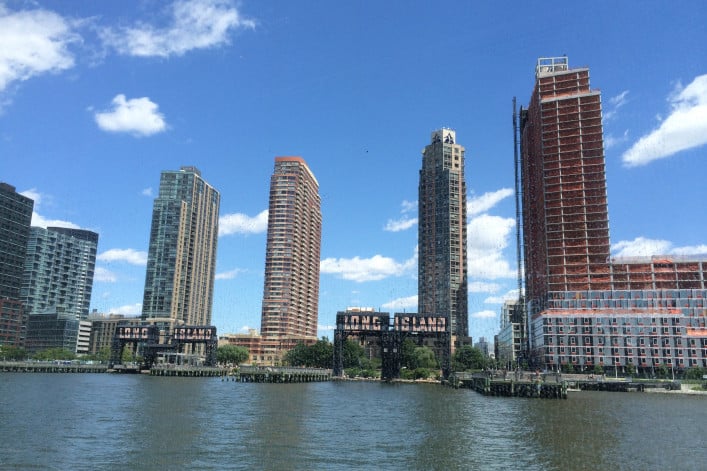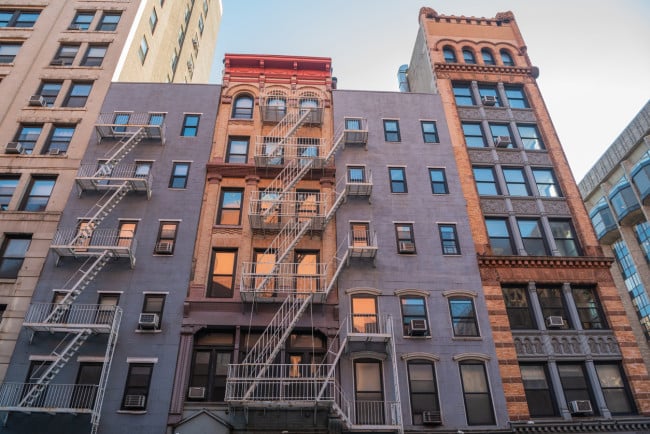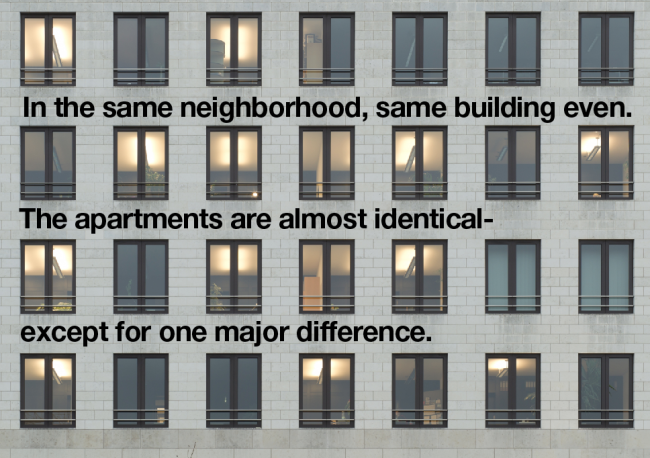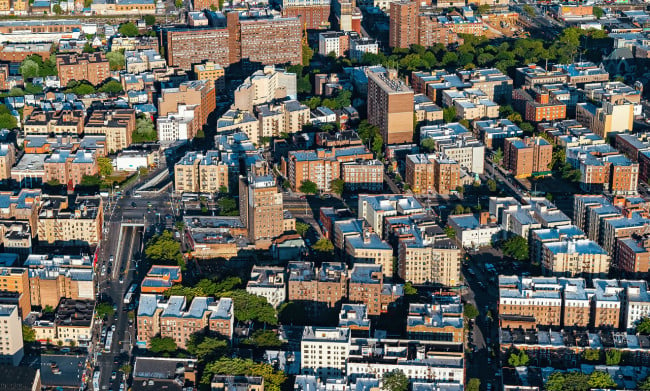Here's how incomes—and rents—are REALLY calculated in NYC's affordable housing
While many New Yorkers are clamoring for a spot in one of the city's rare affordable "80/20" rentals, often, when you look into a building's income requirements and rents, there's an inevitable follow-up question: Who can really afford this "affordable" housing?
The question pops up often, whether it's over planned development in East New York that critics say is still too expensive for the neighborhood, or Upper West Side studios asking $2,024/month for residents making between $70,732 and $82,550 a year. Even when the income ranges are relatively high, the monthly rents would put a significant strain on a renter actually earning the required salary.
So how do buildings come up with these numbers? As with pretty much every facet of the city's sometimes-byzantine housing system, it's complicated. Below, we break down a few key components:
Who's determining the income caps?
Short answer: the federal government. The longer answer is that the basis for incomes and asking rents is a number called Area Median Income (AMI), a figure set forth each year by the Department of Housing and Urban Development (HUD). For example, the AMI for New York City in 2016 is $90,600 for a family of four, according to these guidelines from the New York City Housing Development Corporation (HDC). However, that figure is based on data from the larger New York metro area, which includes wealthy parts of Long Island, New Jersey, and and Connecticut. (For this reason, critics have raised concerns that AMI isn't truly representative of NYC's true spread of incomes, let alone the vast differences between city neighborhood income averages.)
From there, affordable housing brackets are determined by different percentages of the AMI. "AMI is set at 'X' percentage for different programs," explains HPD spokesperson Melissa Grace. "For example, under an 80/20 building participating in the federal low income housing tax credit and tax exempt bond income, they'd have to restrict incomes for low-income units to no more than 60 percent of AMI." (Right now, 60 percent of AMI in New York shakes down to an annual salary of $38,100 per year for an individual, and $54,360 for a family of four—you can check out other percentage breakdowns here.)
While the cutoff for the low-income tax credit is set firmly at 60 percent of AMI—and therefore determines the most standard set of income ranges you'll see in affordable housing—different programs and tax credits encourage developers to rent to residents at a variety of income levels (and AMI percentages), which is why you'll see different income ranges in affordable housing listings (more on that below).
Why is there affordable housing for those making a decent income (low six figures), and so few options for the poorest of New Yorkers?
Another common source of confusion—and frustration—with the city's affordable housing system is the seeming preponderance of listings geared towards renters earning well over six figures. Why, after all, should tenants with comparatively high salaries get a spot in an affordable rental when so many other New Yorkers are in dire need?
"I think when most people think of 'affordable housing,' they think about helping people making less than $30,000 or $20,000 a year. That's the gut reaction when you think of low income," Rob Solano, co-founder of housing nonprofit Churches United for Fair Housing. "Nobody thinks about affordable housing for someone who makes $150,000. But think about it—that could be the combined salary of a teacher and construction worker in this city, and they'd still need help finding housing."
This is what's known as "middle-income" housing, geared toward middle-class earners who are increasingly feeling the squeeze in the city's brutal housing market. But renters within a certain range will also notice a disparity in the listings: You'll often see options for lower-income renters, as well as those making $100,000 or more, but not much for, say, an individual earning down the middle in between around $60,000 and $80,000. And there's a good reason for this.
"When you're building housing for 60 percent AMI or lower, you get tax credits and other incentives," explains Sarah Meier-Zimbler, who works with nonprofit The Actors Fund, which helps members find affordable housing. "And if you're offering rentals to people making between 120 percent to 165 percent of AMI, you don't need as much subsidy, because they'll be paying higher rents. But options for renters earning between 80 percent and 100 percent AMI are the least common, because developers offering options in that range don't really qualify for tax credits, but still need some subsidies." This all means that in order to make their bottom line, buildings either need to receive heavy subsidies for taking on low-income renters, or offer up stabilized apartments to wealthier renters able to pay much higher prices, with little room for options in between.
Similarly, says Meier-Zimbler, while the low-income tax credit is tied to offerings for renters making a maximum of 60 percent AMI, developers tend to offer very little at 30 percent of AMI or lower, which can be a problem for affordable housing in particularly low-income areas. "In lower-income neighborhoods, 30 percent AMI is probably the median income for that neighborhood," she explains, meaning that the neighborhood's poorest residents end up shut out of 'affordable' housing options.
Why is the rent in "affordable" rentals still too damn high?
If you've ever had the sinking feeling of looking at a listing on NYC Housing Connect and realizing that even though you technically qualify, you still couldn't afford the rent, you're not alone.
Take the example of Sylvia Morse, a native New Yorker and nonprofit worker who recently ran up against this very problem when she found out she was in the running for an 80/20 rental in Brooklyn. "At the time, I was making around $62,000 a year, and was told I was eligible for a $1,621/month studio," Morse explains. "But I took home approximately $1,550 every two weeks, so that would have made the rent around 52 percent of my take-home pay—a whole paycheck and then some." If she'd been looking for market-rate apartments, while factoring in living expenses and student loan debt, says Morse, she'd have been looking for apartments with lower rents than the ones offered up as affordable housing.
"I know I'm lucky and that there are even fewer options for people with lower incomes," she tells us, "But I was surprised that even in a relatively high salary range, the rents still weren't especially affordable when it came down to every day life."
For this problem, the explanation's actually pretty simple (if maddening). Since "rent-burdened" is defined as paying more than 30 percent of your income on housing, rents in affordable housing are calculated as 30 percent of a tenant's income. "The problem is that that's based on your gross income, or what you make before taxes," says Meier-Zimbler, who notes that the calculation is based on federal regulations, and therefore difficult to change. "I think it would be a total game-changer if instead of doing gross income, they calculated rents based on take-home pay, but that's not something the city can just do—it's federally mandated," she adds. Indeed, there doesn't seem to be much movement to change this policy any time soon.
"It's a flawed model, but the reality of trying to go to congress to change this kind of thing is difficult," concurs Solano. Still, if you can swing the rent, it's worth trying to land a spot in an 80/20 or other rent-regulated apartment, since they come with extra protections besides the comparatively low rents.
"All of the leases you sign in these buildings are rent-stabilized leases, so you have extra legal protections going forward," says Meier-Zimbler. "So if you're deciding between a $3,000/month market-rate apartment or a $3,000/month subsidized apartment, subsidized is always the better choice."
You Might Also Like




























